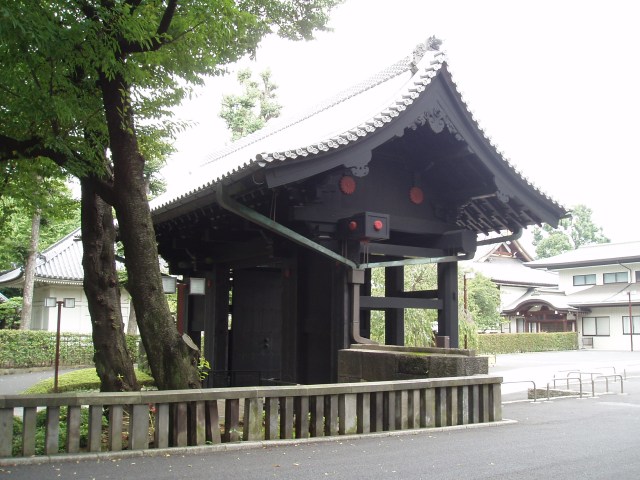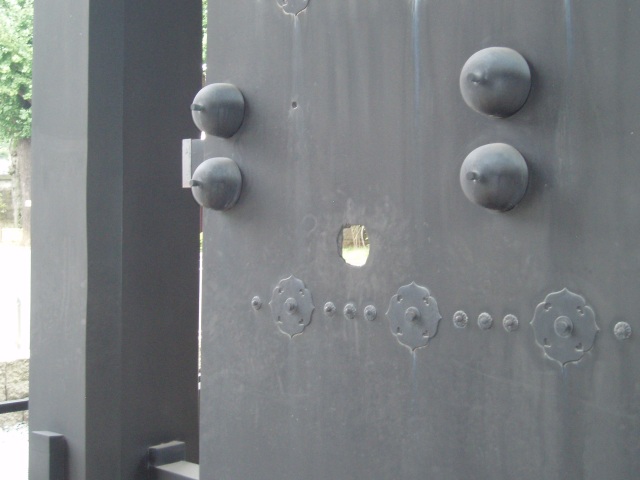Two Saintly Priests named “Ryogen” and “Tenkai”
There is a prayer’s hall called “RYO-DAISHI-DO” on the right side of the Tokyo National Museum in Ueno Park.
It was built to be one of prayer’s hall in Kaneiji Temple complex in 1644 to commemorate 2 saintly priests who were called “Ryogen” and “Tenkai”. They greatly contributed to the development of Japanese Buddhism.
“RYOGEN” was the 18th head of Enryakuji Temple on Mt. Hieizan in Kyoto in the 10th century. While “Tenkai” was the founder of Kaneiji Temple on Ueno Hill in the early 17th century. To honor their great achievements, Imperial Court awarded both priests a single title “Daishi” which means Great Saint. Tenkai left a will on the verge of his death to build up the prayer’s hall on Ueno Hill where Ryogen and Tenkai were worshipped together since Tenkai highly respected Ryogen. The original prayer’s hall was destroyed by fire in 1781 and thereafter it had been repeatedly rebuilt following fire disasters 2 times. The current hall was restored in 1993. The precinct of the hall is not relatively large but it makes us feel something, having historical Buddhist elegance. For instance, a belfry casted in Edo period, quaint bronze lanterns, a bronze water basin, a black lacquered gate with the ruins of bullet’s holes and cannon shell’s. In the spring cherry trees are in full bloom. It is one of the most beautiful sights to behold. In summer we can view sacred lotus flowers in a tiny pond. Visitors from overseas will also be able to enjoy Japanese traditional aesthetic beauty in this hall ground.
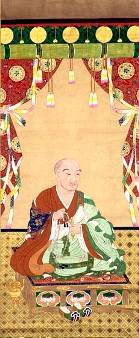
RYOGEN
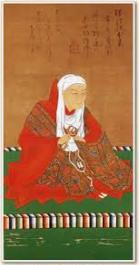
TENKAI
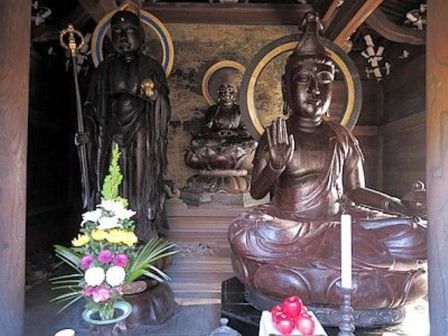
Small Prayer’s Hall
There is an auxiliary prayer’s hall on the right side after passing through the main gate of “RYO-DAISHI DO”.
The small hall worships 3 Buddha’s images inside. “Kokuzo Bosatsu” on the right side is god having
limitless wisdom and compassion. ”Amidanyorai” with halo ring around its head at the center is goddess
of enlightenment. “Jizo” with halo ring on the left side is god for guardian of children.
Belfry
And then next to the hall we can observe a belfry which was casted in the flourishing Genroku period in 1651.
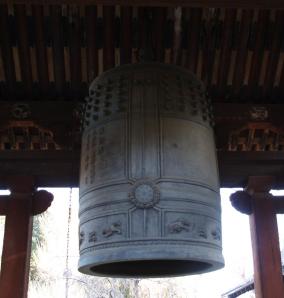
Bronze Lanterns
The Bronze lanterns on the both sides of a path were donated by 3 privileged branches of Tokugawa family in 1644.
We can find out the elaborate tracery with heavenly nymph on the fire box window and, dragon and imaginary lion are in sharp relief around its pedestal.
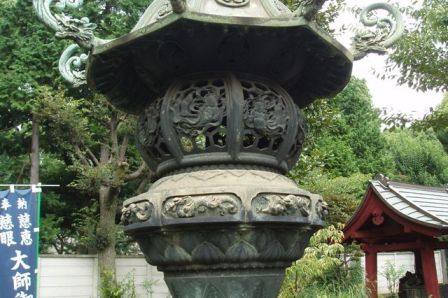
Cemetery for main priests of Kaneiji Temple
Over the lanterns, we can see the tomb stones for successive heads of Kaneiji temple.
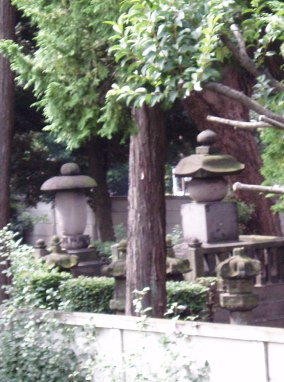
RYOGEN’S TALISMAN
It was said that Ryogen transformed himself into Demon with 2 hones and stopped the spreading of plague around 1,040 years ago. He issued talisman against the evil where the Ryogen’s Demon was depicted as savior.
Around 3,000 prayers were in line to get the charm sheet during new year’s holiday.
It is also said that Ryogen is the originator of “Omikuji” (Sacred lot).
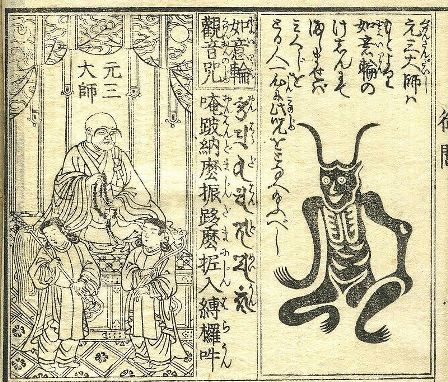
Water Basin for purification
A symbolic building for purification called “Chouzuya” stands near to the pond. A bronze water basin is being installed inside. Prayers wash their hands and rinse their mouth with sacred water in the basin following the manner of a ritual ceremony before they worship god. The spout of the basin forms a head of dragon and then crane-shaped statues are extruded from both sides of the basin and the whole body of the basin is rested on 4 imaginary lion statues called Karajisi at four corners.
It differs from other basins being installed in Kiyomizu-Kannon-Do Temple and Toshogu Shrine on Ueno Hill.
It is certainly worth looking.
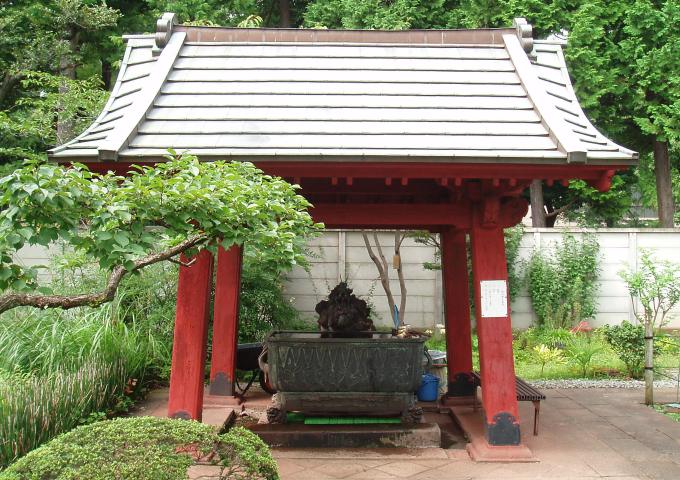
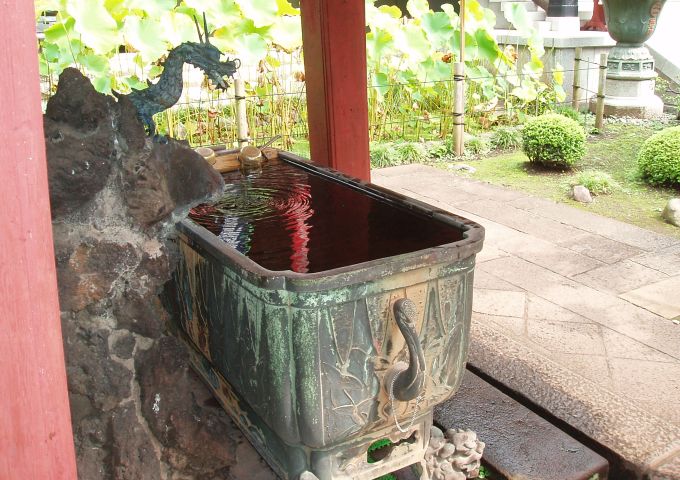
Ancient Lotus Flower
We can observe ancient lotus flowers in a tiny pond at the left side of main prayer’s hall in summer time.
It was germinated by Botanist Dr. Ohga from around 2,000 years’ old seeds. It is said that lotus flower is blooming in Shangri-La. It is sacred flower which is often used as motif for Buddhist art.
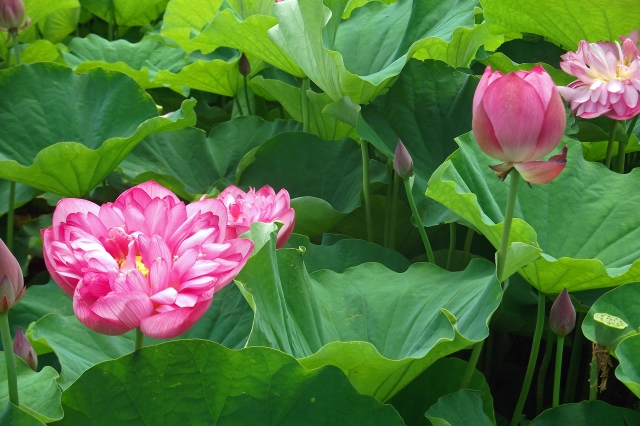
Main Hall
The Main hall enshrines the statues of 2 Saints, “Ryogen” and “Tenkai”. And it is also storing the articles belonging to Ryogen and the drawing of his standing posture which were escaped from the Nobunaga Oda’s fire attack to Enryakuji temple in Kyoto in 1571.
On April 8, Flower festival, or Kanbutsu-e in Japanese has been conducted every year to celebrate Buddha’s birth day. People pour hydrangea tea on small Buddha’s statue enshrined in an altar decorated with flower.
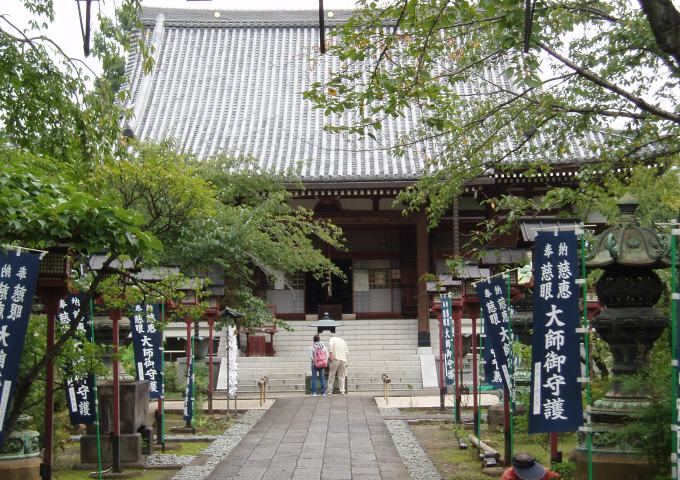
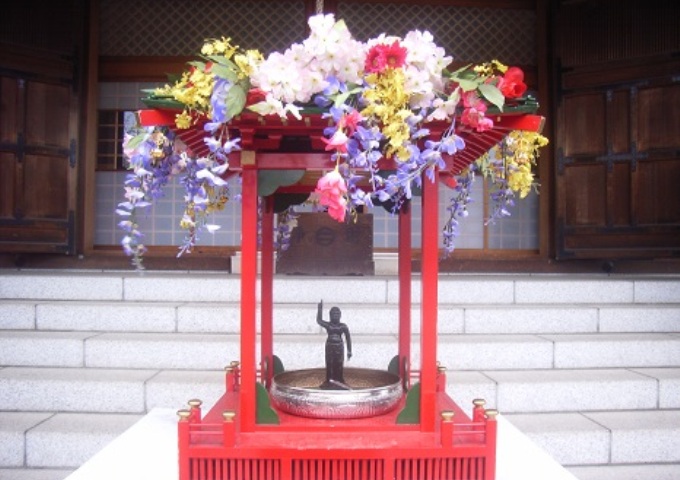
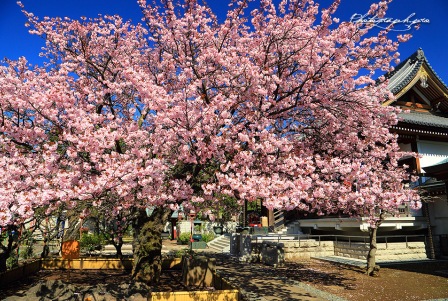
HEAD TURNER OF BEAUTIFUL CHERRY BLOSSOM
We can also see a cherry tree within a bamboo enclosure at the right side of the main hall.
In early spring, it produces beautiful blooms with both single and double tiered petals on its weeping branches.
It is said that the cherry blossom was so beautiful that many people were driven to look over their shoulders or turn around their carriages to view the flower once again even on their returning to their home.
Frugal Gate
Back of the cherry tree, there stands a simple and seasoned gate which was relocated from the resident of famous novelist named “Ogai Mori” The style of the gate is called “Udegi-Mon”. It is observed at the entrance of the private house where a retired man from business is spending frugal life.
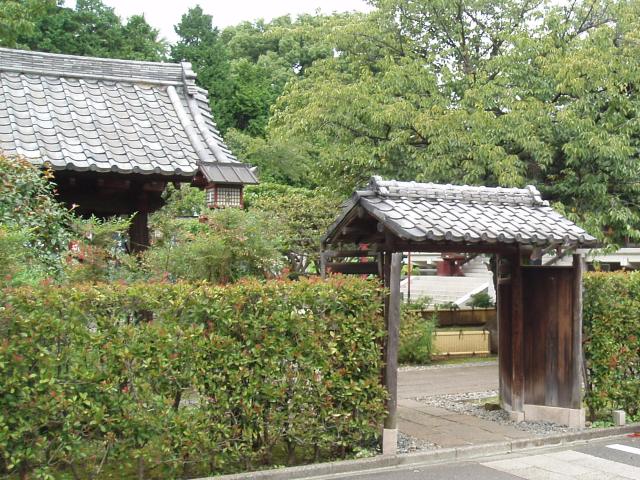
Rinnouden Ceremony Hall
After passing through the gate, we can find the big building called “Rinnouden hall” on the left side where funeral ceremony and Buddhist memorial services are conducted.
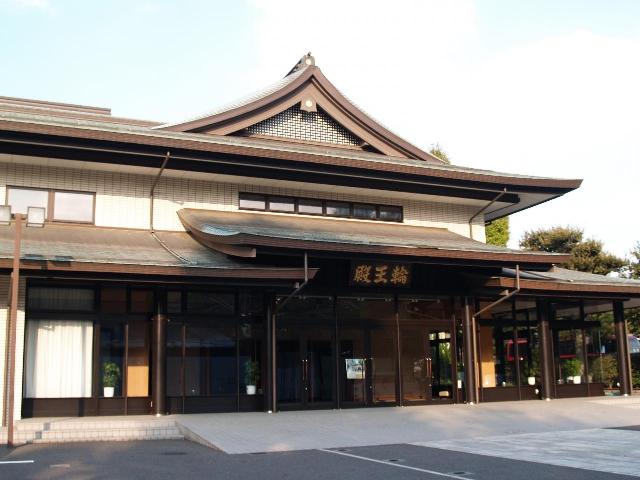
Historical Gate
In front of the Rinnouden Hall. you can see old black-lacquered gate with 2 service entrances on the both sides and it is provided with the garble roof forming wide and elegant curves. It used to be the front gate of main priest’s residential housing in previous Kaneiji Temple Complex during the Edo Era.
The architectural style of this gate was known as Yakui-Mon which literally means the gate of pharmacy and clinic. This style of the gate was commonly observed at medical doctor’s house, clinic’s and hospital’s.
The 2 service doors can be used anytime, that is, providing round-the-clock service to patients.
You can find out the ruin of bullet holes and cannon shell hole on the gate which were marked during the civil war happened between Imperial royalists and Tokugawa royalists on Ueno Hill in 1868. The gate was designated as an important cultural asset by Japanese Government.
